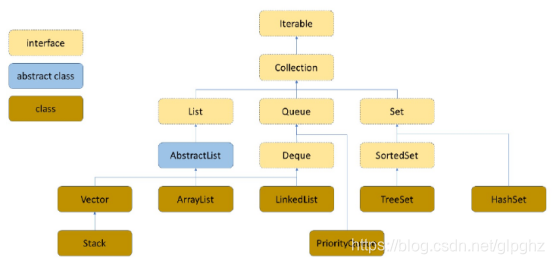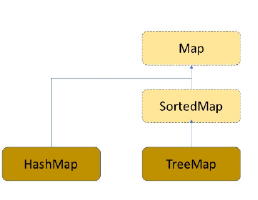HashMap与HashSet
底层都是哈希表


- Set: 纯key模型
- Map:key-value模型
- Set和Map的key值都不能重复,且都可以为null.
1 Map
方法解释
V get(Object key): 返回key 对应的valueV getOrDefault(Object key, V defaultValue): 返回key
对应的value,key不存在,返回默认值V put(K key, V value): 设置key 对应的valueV remove(Object key): 删除key 对应的映射关系Set<K> keySet():返回所有key 的不重复集合Collection<V> values(): 返回所有value 的可重复集合Set<Map.Entry<K, V>> entrySet(): 返回所有的key-value 映射关系boolean containsKey(Object key): 判断是否包含keyboolean containsValue(Object value): 判断是否包含value
对于entrySet()方法:
Set<Map.Entry<K, V>> entrySet():
entrySet()方法返回一个Set集合,集合里面元素的类型为Map.Entry<K,V>。
Map方法Code:
import java.util.Map;
public static void main1(String[] args) {
Map<Integer,String> map = new HashMap<>();
map.put(1,"abc");
map.put(10,"hello");
map.put(null,"goh");
//获取key的集合
Set<Integer> set = map.keySet();
System.out.println(set);
//获取value的集合
Collection<String>collection = map.values();
System.out.println(collection);
//map.entrySet()获取key-value集合
for ( Map.Entry<Integer, String> entrySet : map.entrySet()) {
System.out.println(entrySet.getKey()+" "
+entrySet.getValue());
}
}
2 Set
方法解释
boolean add(E e): 添加元素,但重复元素不会被添加成功
void clear(): 清空集合
boolean contains(Object o): 判断o 是否在集合中
Iterator<E> iterator(): 返回迭代器
boolean remove(Object o): 删除集合中的o
Map没有实现iterable接口,不能使用迭代器,而像List, Queue, Set都实现了iterable接口.
Set方法Code:
import java.util.Set;
public static void main(String[] args) {
Set<Integer> set = new HashSet<>();
set.add(1);
set.add(2);
System.out.println(set);
//只要实现了iterable接口,就可以使用迭代器
Iterator<Integer> iterator = set.iterator();
while (iterator.hasNext()) {
System.out.println(iterator.next());
}
